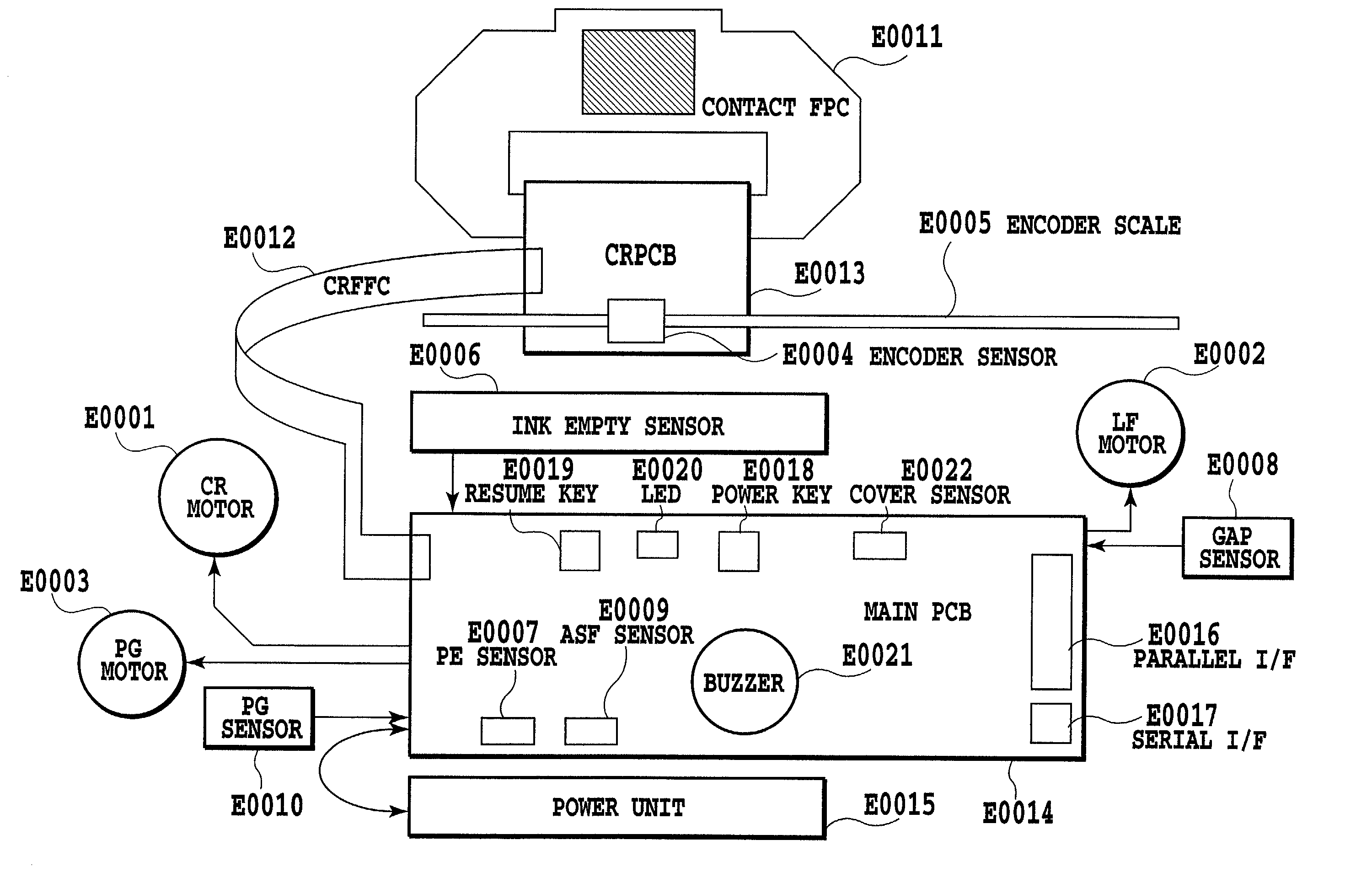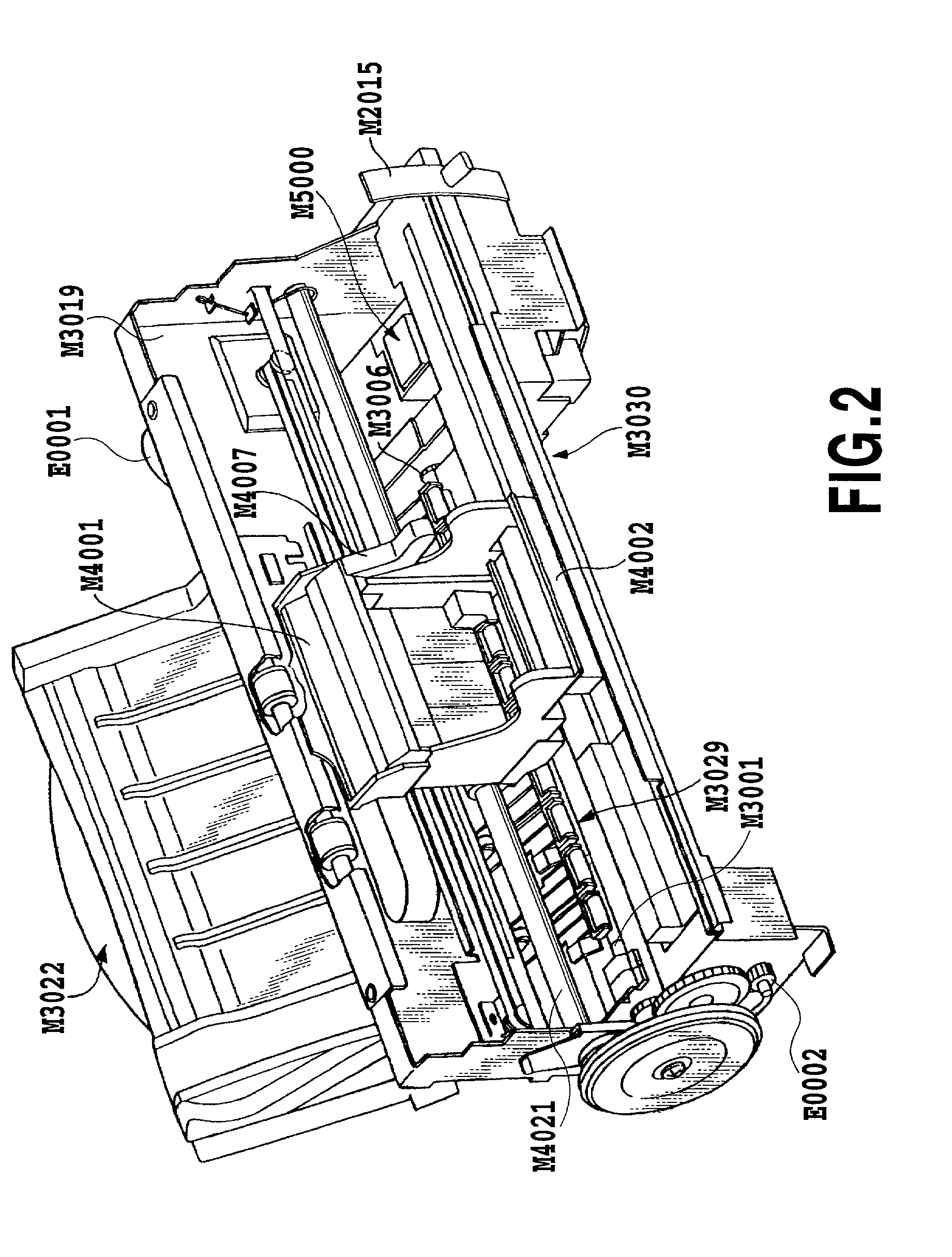Image processor, method for processing image, printing apparatus, printing method, program, and storage medium that stores computer-readable program code
a program code and image processing technology, applied in the direction of digital output to print units, instruments, digitally marking record carriers, etc., can solve the problems of large granularity, large consumption of light inks, and high running costs, and achieve the effect of reducing the granularity of dots
- Summary
- Abstract
- Description
- Claims
- Application Information
AI Technical Summary
Benefits of technology
Problems solved by technology
Method used
Image
Examples
first embodiment
(First Embodiment)
[0135]Next, the first embodiment of the constituent characteristic of the present invention will be described. “Head structure and printing style”
[0136]In this embodiment, a printing head H with a structure as shown in FIGS. 11 to 13 is used as the printing head H1001 mounted on the carnage M4001. In the printing head H of this example, a plurality of ejection ports P each capable of ejecting the ink are arranged in two lines L1, L2 (hereinafter, also referred to as “nozzle rows”). The nozzle rows L1, L2 extend in a sub scanning direction indicated by an arrow Y along which the printing medium is transferred. 128 ejection ports P (for 128 nozzles) each constituting a nozzle in each nozzle row L1 (L2) are formed at regular intervals that correspond to 600 dpi as a pitch Py. Further, the ejection ports P in the nozzle row L1 and the ejection ports P in the nozzle row L2 are shifted from each other by a half pitch (Py / 2) which corresponds to 1200 dpi in the sub scanni...
second embodiment
(Second Embodiment)
[0166]As described above, in the case where the LUT of FIG. 16 is used, since the input gradation level at which the applying of the dark ink is started is increased, consequently the medium-density range A from the applying of the dark ink is started, namely, a density range where the granularity tends to appear, can be narrowed and at the same time the density range B where the dark ink is ejected for applying can also be narrowed. On the other hand, an upper limit of the maximum applying amount of the ink is governed by the kind of the printing medium. Therefore, it is necessary to decide the input gradation level at which the applying of the dark ink is started so that the granularity of the dot is reduced in a range bounded by the maximum applying amount. However, if the maximum applying amount is increased to the upper limit, there may occur deterioration of an image due to overflow of the ink when the second color and the tertiary color are represented by m...
PUM
 Login to View More
Login to View More Abstract
Description
Claims
Application Information
 Login to View More
Login to View More - R&D
- Intellectual Property
- Life Sciences
- Materials
- Tech Scout
- Unparalleled Data Quality
- Higher Quality Content
- 60% Fewer Hallucinations
Browse by: Latest US Patents, China's latest patents, Technical Efficacy Thesaurus, Application Domain, Technology Topic, Popular Technical Reports.
© 2025 PatSnap. All rights reserved.Legal|Privacy policy|Modern Slavery Act Transparency Statement|Sitemap|About US| Contact US: help@patsnap.com



